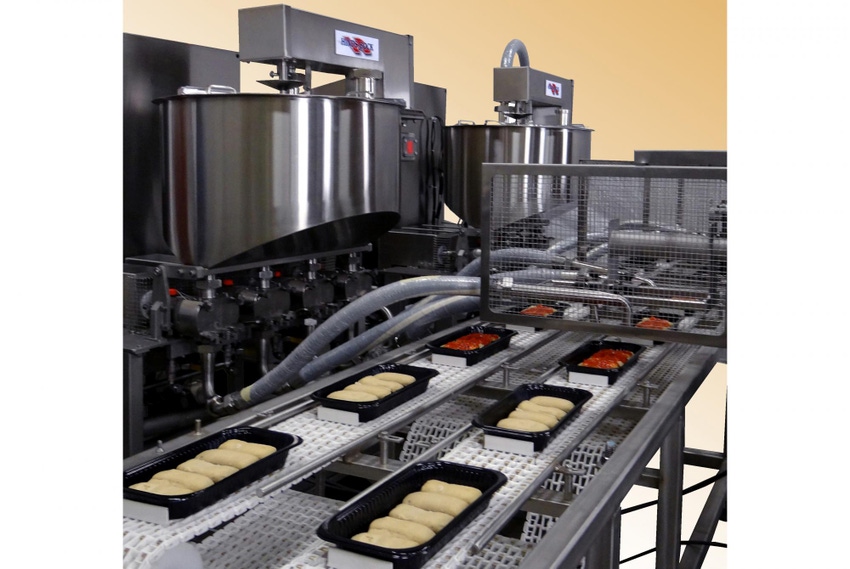Food packaging safety: Filler and filling risk awareness
March 7, 2017

Expert Gary Kestenbaum offers suggestions for addressing filler and filling risks to initiate a series of packaging equipment-focused food safety blogs across a typical packaging production line.
Filling at the manufacturing stage is much like any other process. Current processes in place often require pre-production sanitation, equipment changeovers, setups and verified outcomes. Understaffing and management assumptions of low risk often lead to a production process set on “auto pilot,” with a close eye on the productivity and case count “screen” as a reminder to keep the lines running. Have filler setups, adjustments, observations and best practices been performed to sufficiently mitigate risks?
Communicating and verifying the objective
The methodologies—electronic, manual or both—that link the scheduled product to the correct setup and run processes are critical. They are intended to consider product-specific sanitation, inspection, testing, configuration, selection of collection, product, and package components and more. Deviations in the process lead to costly rework and productivity reduction at the least, and defects, personal safety hazards and recalls at worst.
Guidance:
Revisit product-specific notifications and methods from schedule to palletizer. Have continuous improvement and quality specialists stress-test each process for deviation risk potential. Revise steps with potential for errors.
Create redundancies for verification in the event primary (e.g. scanning) verification is compromised.
Develop a setup inspection checklist for mechanics and operators to use and sign. Implement management review looking for activity (or lack of same) which appears to cut corners or leave gaps in the process.

Filling configuration effectiveness
If the filler is flood-fed with a consistent, homogenous, in-specification solid product or liquid product, the process is less likely to require special or constant oversight. However, for filling setups that involve multiple sources, dosing, components, particle size/shape/density disparity, intermittent or funnel feed and other characteristics which are likely to impact the quality and consistency of single doses over time, equipment configurations and accessory add-ins are critical to keeping the process uniform and sell units within specification.
Guidance:
Perform extended dosing runs. “Sample many, test few” with emphasis on heavy sampling at the beginning and end of a run, batch or sequence; that’s where there is the highest likelihood of variation. Learn the risks for segregation and related defects before products are packaged. Use data to predict added steps needed to maintain uniformity and consistency.
Encoders, decoders, readers and electronic computerized components intended to communicate and maintain steady state are at risk of incompatibility and drift, which will impact composition of the product-in-package. Test electronic communication and activity to identify “drift” and correct.
Storage, selection and verification
What is the likelihood that operators, helpers and setup specialists might accidently use the wrong filler or package component? Are similar-looking items and components stored close together, increasing the chance that the wrong item will be inadvertently used?
Guidance:
Use a scannable bar code identification systems when possible. If not, implement an effective, alternative verification process for each unique item to verify compliance. Similar products and components with high likelihood of mistaken selection should be identified using unique marking and identification systems to reduce and control risk.
Small parts/physical contamination
Product and process line changeovers increase the risk of physical contamination in the package. Steps must be in place to anticipate them and inspect/adjust to avoid such calamities.
Guidance:
Have a safety team inspect the entire hardware process for small parts or friction points which may cause physical contamination. Identify the risks of rigid parts (nuts, washers), filings, or scale getting dosed into the individual package. Do not assume that metal detection will protect process integrity. Avoid process components which are likely to abrade, disintegrate or fray.
Gary Kestenbaum has 40 years’ experience in the food and packaging industries, 6 as a supplier with National Starch, 18 as a product developer with General/Kraft Foods and 15 as a packaging engineer and developer with Kraft. As senior food packaging safety consultant with EHA Consulting Group, Kestenbaum provides guidance on packaging safety and suitability-related projects for raw material manufacturers, converters and associated supporting professionals. He can be reached at [email protected] or 410-484-9133. The website is www.ehagroup.com.
About the Author(s)
You May Also Like




